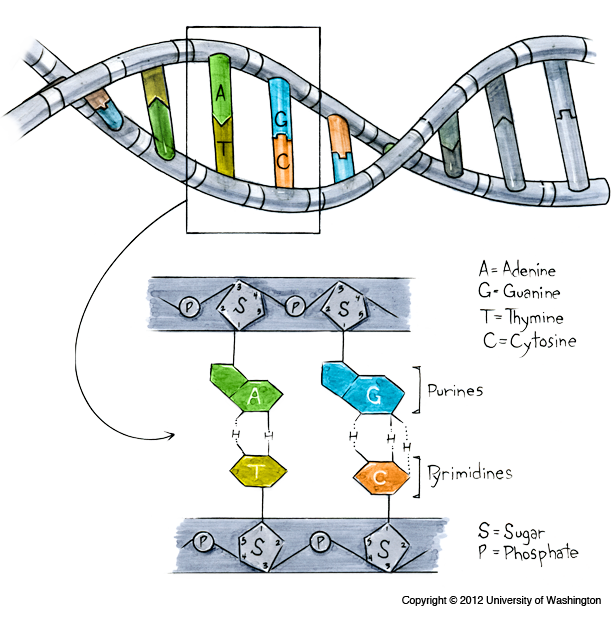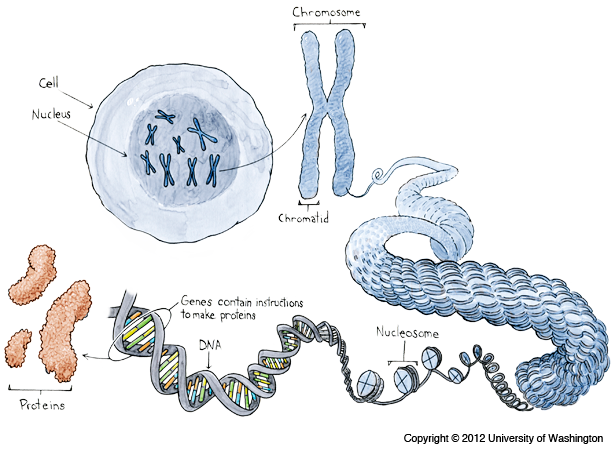Deoxyribonucleic acid (DNA) is made of four molecules called bases, which are abbreviated as letters:
A = Adenine
T = Thymine
C = Cytosine
G = Guanine
Structure of DNA
The letters or bases are linked together to make a strand of DNA. Two strands of DNA are paired together and form a structure called a double helix.
- Adenine, A, is always paired with thymine, T.
- Cytosine, C, is always paired with guanine, G.
The three-dimensional shape of a double helix looks like a twisted ladder. The paired bases (A-T and C-G) are like the rungs of the ladder.

Genes are made of DNA
The language of genetics has only four letters (A,T, C, and G). These four letters are combined into three-letter words. The words make up “genes,” which are like sentences. Each sentence has an important meaning or story to tell. Genes provide the instructions to keep cells in your body doing their jobs.
Genes are packaged into chromosomes
DNA is organized into about 20,000 genes, and genes are packaged into chromosomes. You can think of your entire genetic code as a set of encyclopedias, and each chromosome as a separate volume. Normally, a person inherits half of their chromosomes from their mother and the other half from their father.
Most people have 23 pairs of chromosomes, for a total of 46 chromosomes.

Chromosomes are called “sex chromosomes” and “autosomes”
Of these 46 chromosomes, two chromosomes determine if a baby is male or female. The sex chromosomes are called “X” and “Y.” Most males have one X chromosome and one Y chromosome. Most females have two X chromosomes. In addition to the two sex chromosomes, the other chromosomes are called “autosomes” and are numbered 1-22.

